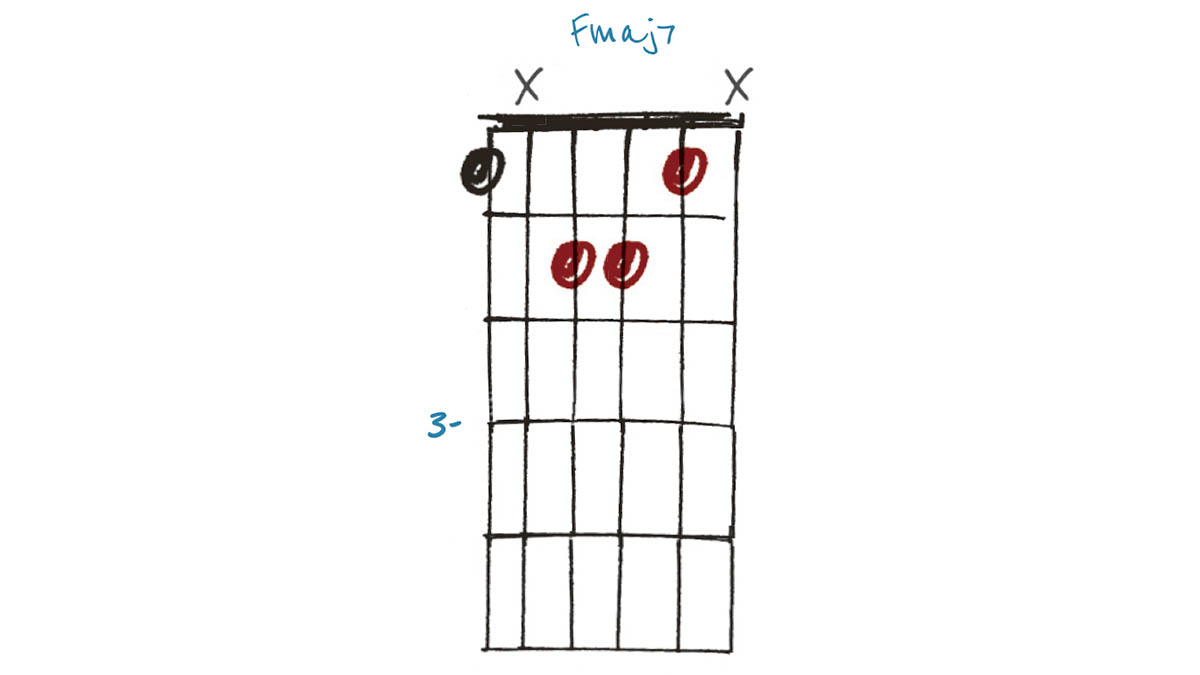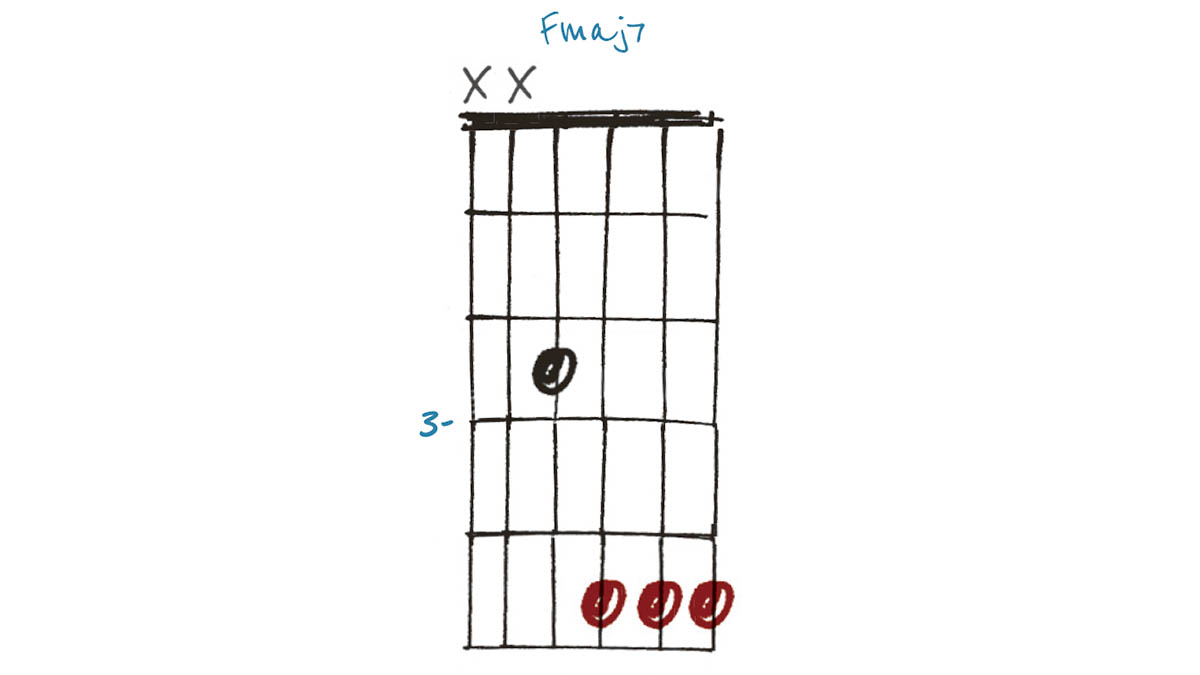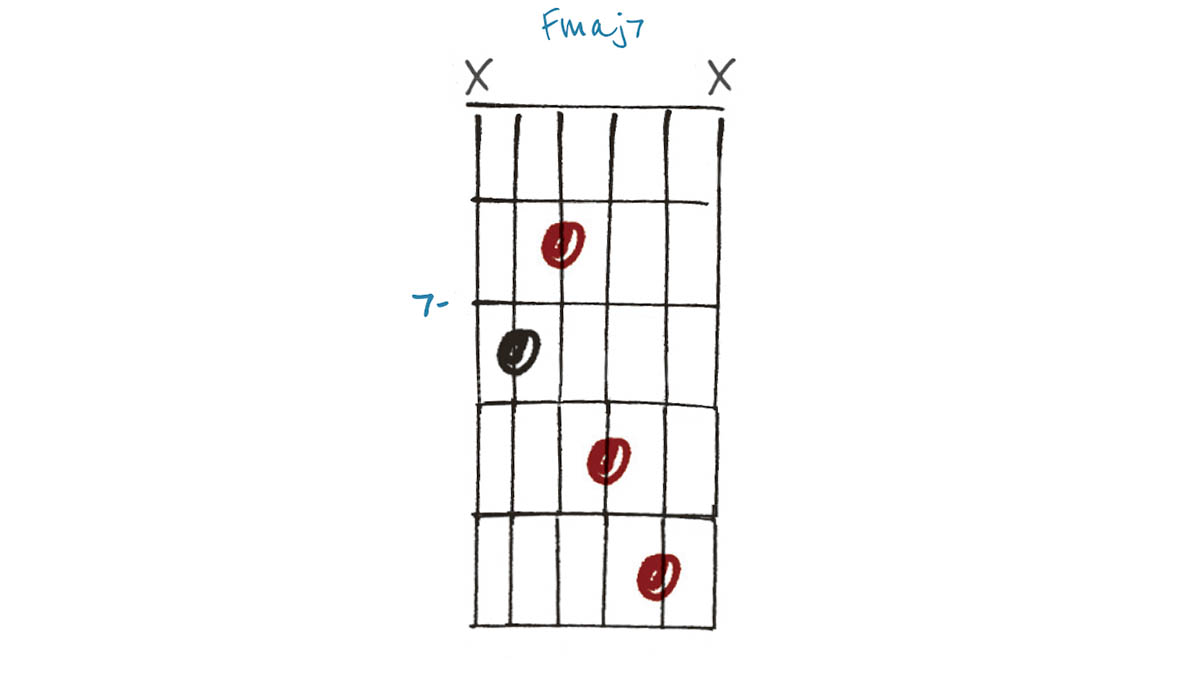
Chords can be varied and moved around the fretboard, sometimes opening up the possibility of alternative names due to the different inversions or potential context in a progression.
I would like to realise that idea more fully by taking the well-loved major 7th chord and shifting it to various positions – with a few alterations here and there.
The overarching concept is that while scales are incredibly useful, as guitar players we often relate more comfortably to shapes, whether this signifies the pentatonic boxes or the recognition of a chord shape traced on the fretboard when playing an arpeggio.
We’ll also touch on some possibilities for shifting a bass note to effect a chord change, while keeping much of the harmony static. It’s all about getting comfortable with with using all areas of the fretboard, which can significantly benefit your solos and chord playing.
Example 1

This Fmaj7 can be seen as an A minor with an F bass. This tells us that A minor-based licks can work over F major chords, unlocking new melodic ideas. The fifth string (A) is muted. It wouldn’t make a discord, but it would sound a bit congested in the low-end. Omitting notes like this is common practice in the jazz world. Raise that F bass note to F# for F#m7b5!
Example 2

This Fmaj7 has a C in the bass, but this isn’t particularly a distinguishing feature; it just sounds fuller on its own. You could omit this and raise the F on the fourth string to make F#m7b5, or go one further to add in the open fifth string (A) to give you Amin6.
Example 3

Nile Rodgers has been known to use this voicing of the maj7 chord (in this case Fmaj7). It’s easy to move around in a melodic ‘chord melody’ way: check out the intro to Sister Sledge’s Thinking of You. As with Examples 1 and 2, you could raise the F (found here on the fourth string) to F# for an F#m7b5. These sit very nicely together.
Example 4.

Using the same grouping of notes at the top, this version of Fmaj7 lays out all the intervals in a very neat way, ideal as a starting point for playing arpeggios or arpeggiated chords.
If you can reach it, the F on the fifth string can be raised to F# for F#m7b5, though this might be more comfortable played one note at a time as an arpeggio.
Example 5

This Fmaj7 is something of an odd one out. Because the stacking of notes jumps from Root (F) to major 3rd (A) to major 7th (E) then another major 3rd on the second string, without the 5th (C), there is no opportunity to create an F#m7b5 by simply raising the F (on the fifth string here). However, this could give us a nice F#min7!







